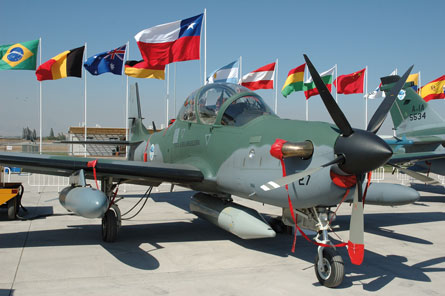Our second military aircraft review of the year looks at the vital training sector, where rival manufacturers turn every contest into a battle of the fittest
Militaries around the globe face a challenge in preparing their new combat pilots for the demands of the network-centric age. It's a need that requires the manufacturers of modern trainer aircraft to deliver platforms capable of readying aviators for an operational world that is strikingly different to that of barely a generation ago.
The last year has seen the first moves in an exciting period of pilot training, with several new aircraft having secured first customers and other manufacturers stepping up their efforts to steal ground from their rivals as last-generation platforms in service with numerous countries show increasing signs of age.
|
|---|
Pilatus and Yakovlev have since early last year celebrated first export deals to supply their respective PC-21 basic and Yak-130 advanced trainers to Singapore and Algeria, while BAE Systems' long-term aspirations for its more than 35-year-old Hawk design have been boosted by a fresh commitment from the UK for its latest production-standard airframe.
Competition
Long viewed as an international benchmark in the training aircraft sector, the Hawk is under increased pressure from more modern platforms such as the Alenia Aermacchi M-346 - which has yet to secure a buyer - and the Korea Aerospace Industries/Lockheed Martin T-50 now entering use with the South Korean air force. The trio are locked in a head-to-head battle in the United Arab Emirates, with each hoping that success in the nation's new training contest could open the door to decades of business in the Middle East and beyond.
With BAE projecting a market for 800 advanced jet trainers over the next 20 years, it is little surprise that each competition is so fiercely fought in this high-profile sector.
Late last year also saw decisions in major competitions to select industrial partners to deliver new training systems in Singapore and the UK, with countries such as Australia watching the programmes with considerable interest before making a decision on their own future pilot training solutions. However, a potentially ground-breaking project intended to meet the advanced training needs of nine European air forces has continued to make slow progress, largely as a result of the primarily industrial interests of its remaining partner nations.
USA and China
The US armed forces are transforming their pilot training systems to prepare for combat operations with the US Air Force's Lockheed F-22A Raptor stealth fighter and the arrival of the company's F-35 Joint Strike Fighter from early next decade to equip the air force, navy and Marine Corps. Meanwhile, China is seeking a new advanced trainer to prepare pilots to operate advanced types such as the J-10 and Sukhoi Su-30, and its domestic trainer products are likely to play a more significant part on the export stage over the coming years as the nation's aviation industry closes the technology and quality gap with the West.
Further down the training scale, nations are looking to cut costs by transferring some work from the current advanced and lead-in fighter elements of their training systems to primary platforms, hinting at a continued healthy market for designs such as the PC-21, Embraer EMB-314 Super Tucano and Raytheon T-6A/B Texan II. Far from being an industry buzzword, this so-called process of "downloading" is an operational necessity now facing even the largest and most well funded of air forces.
Flight's military trainers review....
|
|
Related articles:
Natural selection
Games without frontiers as nations come together
Trainer manufacturers jostle for business
Source: Flight International

















